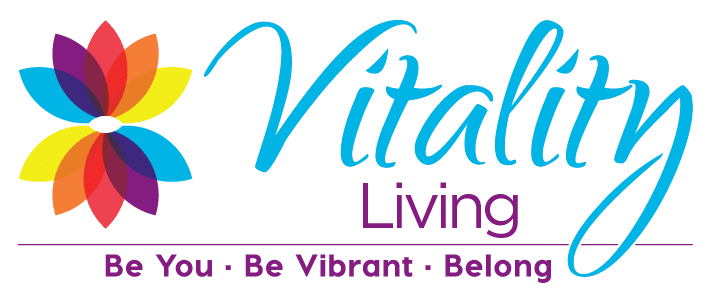Not so long ago, there were only two types of “homes”: the family home and the nursing home. Typically, older adults transitioned from the former to the latter when their care needs exceeded the family members’ ability to meet them, or when memory issues created unsafe conditions for remaining at home. At that time, people didn’t have any other choices.
However, times have changed quite a bit in recent years. In fact, older adults today have a wide array of options, including a diverse range of vibrant communities. But some confusion persists because the “nursing home” moniker continues to attach itself to anything in the realm of senior living.
Download The Complete Guide to Choosing Between Senior Living Options
Vocabulary matters when it comes to choosing a lifestyle for oneself or one’s parents. In fact, assisted living and nursing home communities are very different. Understanding the distinct characteristics of each is important for older adults pondering their choices as well as for their children helping them make those lifestyle decisions.
Time for a Change
Over the past 25 years, new forms of residences for older adults were developed and coined as assisted living and memory care communities. Developed to blend clinical care in a private residential setting with hospitality services, this model was initially designed to act as a bridge between home and nursing home settings by offering mostly basic services, such as medication management, personal care, dining, housekeeping, maintenance, activities, and transportation support. As needs increased, the concept was to transition into a nursing home for more complex care.
Today, older adults can usually remain in an assisted living community without having to move into a nursing home. Nevertheless, some care needs do exceed the licensing guidelines for assisted living, and as these guidelines are different in each state, families should always ask about the discharge criteria for the community they are considering.
Often, discharges are required when residents require the assistance of two people to transfer, when care delivery requires “on-demand,” rather than scheduled care, or when treatment requires intravenous medications or the assistance of clinical equipment. However, many communities allow families to bring in private caregivers to provide these services.
Assisted Living vs. Nursing Homes
Here are some key differences between nursing homes and assisted living lifestyles so that you can start to determine the right fit for your family.
Accommodations
In assisted living, residents furnish their own apartments with personal items, such as their own bedding and belongings that have special meaning. These communities usually offer a variety of apartments or suites to choose from, including studios, one-bedroom, and two-bedroom apartments in assisted living and typically private and shared studios in memory care.
Nursing homes supply basic furnishings, such as a hospital bed, bedding, wardrobe, nightstand, and dresser, and allow patients to bring some personal belongings as well. Moreover, patients live in rooms with bathrooms, rather than apartments, that they typically share with one to three other patients.
Person-Centered vs. Task-Focused Experience
A fundamental aspect of assisted living is individualized lifestyles for each resident; you will often hear the phrase “person-centered care.” A resident’s preferences are taken into consideration during the creation of care plans. Before moving into an assisted living community, residents are asked about their routines with questions such as:
- What time do you typically go to bed and wake up?
- Do you usually bathe or shower in the morning or evening and how often?
- What are your interests, hobbies, and food preferences?
This information informs the care plan, activity schedules, and menu development. Staffing is then adjusted based on resident needs.
Nursing homes, on the other hand, create efficiencies by adhering to schedules based on staff availability first, rather than individual preferences. Caregivers are more task-focused, and the lifestyle is more regimented. This means fewer choices in schedules, activities, and dining options. Staffing is consistent and determined by regulations.
Cost of Living
Depending on which state you live in, the average monthly cost of senior housing may vary. A private room in an assisted living community ranges from $2,500 to $4,000 per month, while a private room in a nursing home ranges from $4,000 to $8,000. If you choose a shared room in a nursing home, the price is lower. Additionally, Medicare or Medicaid covers the majority of nursing home facilities, while coverage for assisted living communities varies, depending on the state.
Payment Sources
Often, the decision between choosing an assisted living or nursing home comes down to cost. For the most part, assisted living is funded by tapping into personal assets, such as the sale of a home, savings, investments, or family contributions. Some states have created programs that supplement the costs, so it is important to ask about state programs at the communities you are considering.
Nursing homes can be funded by personal assets but are more often funded by federal programs such as Medicaid. However, patients have to “spend down” assets to qualify for federal funding, and estate planning attorneys are often consulted for guidance through the process.
Other funding vehicles that can be applied to either assisted living or nursing home payments include Veteran’s Aid and Attendance benefits, long-term care insurance, and the conversion of life insurance policies.
Refer to this whitepaper written by Senior Housing News to learn more about funding options for senior living.
Making Your Choice
Despite the differences, some commonalities pervade nursing home and assisted living experiences. Both emphasize the availability of well-balanced, nutritious meals. Both take seriously the need to keep residents safe and secure. And both types of community may offer memory care services as well as supportive services, such as laundry and housekeeping.
Still, as you can see, assisted living communities and nursing homes have a world of difference. The right fit for you and your family will likely take some time and exploration of your options.
For more information on how to make the right decision for your family, including checklists and tips for financial planning, download our free e-book, The Complete Guide to Choosing Between Senior Living Options.




